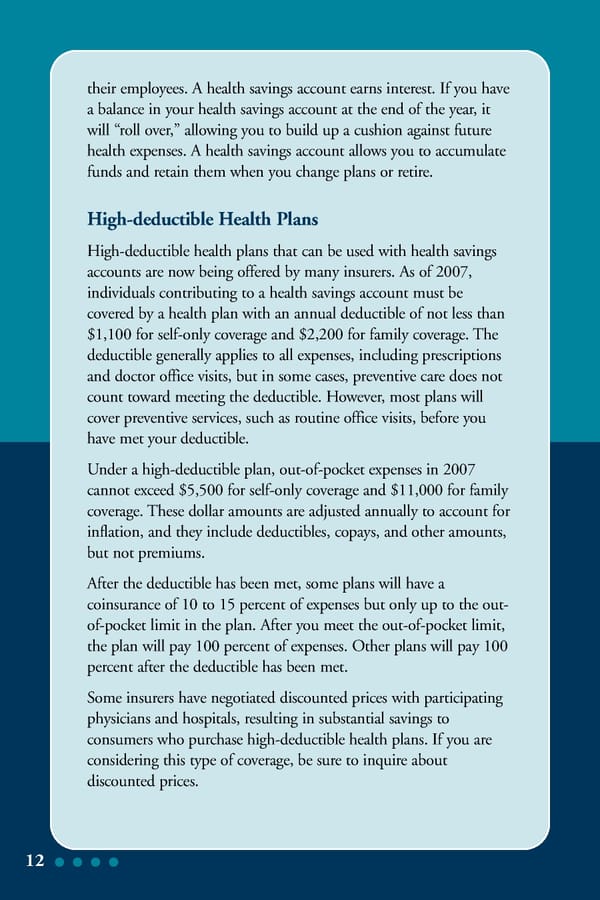their employees. A health savings account earns interest. If you have a balance in your health savings account at the end of the year, it will “roll over,” allowing you to build up a cushion against future health expenses. A health savings account allows you to accumulate funds and retain them when you change plans or retire. High-deductible Health Plans High-deductible health plans that can be used with health savings accounts are now being offered by many insurers. As of 2007, individuals contributing to a health savings account must be covered by a health plan with an annual deductible of not less than $1,100 for self-only coverage and $2,200 for family coverage. The deductible generally applies to all expenses, including prescriptions and doctor office visits, but in some cases, preventive care does not count toward meeting the deductible. However, most plans will cover preventive services, such as routine office visits, before you have met your deductible. Under a high-deductible plan, out-of-pocket expenses in 2007 cannot exceed $5,500 for self-only coverage and $11,000 for family coverage. These dollar amounts are adjusted annually to account for inflation, and they include deductibles, copays, and other amounts, but not premiums. After the deductible has been met, some plans will have a coinsurance of 10 to 15 percent of expenses but only up to the out- of-pocket limit in the plan. After you meet the out-of-pocket limit, the plan will pay 100 percent of expenses. Other plans will pay 100 percent after the deductible has been met. Some insurers have negotiated discounted prices with participating physicians and hospitals, resulting in substantial savings to consumers who purchase high-deductible health plans. If you are considering this type of coverage, be sure to inquire about discounted prices. 12
 Health Insurance Q&A Page 15 Page 17
Health Insurance Q&A Page 15 Page 17